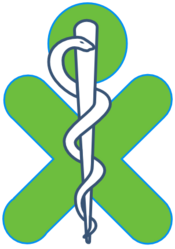User:Cjl/ideas: Difference between revisions
No edit summary |
|||
| Line 4: | Line 4: | ||
== The Importance of Animal Health to Human Health == |
== The Importance of Animal Health to Human Health == |
||
| ⚫ | |||
* Improvements in the health of livestock can lead directly to improvements in nutritional and economic status as well as water/sanitation and environmental conditions. All of these can have a critical impact on learning. |
* Improvements in the health of livestock can lead directly to improvements in nutritional and economic status as well as water/sanitation and environmental conditions. All of these can have a critical impact on learning. |
||
* Human health can be adversely impacted by disease in livestock through [http://en.wikipedia.org/wiki/Zoonoses zoonoses] (diseases passed from animals to humans). Examples include some of the most pressing public health concerns in the developing world (e.g. parasitic diseases, [http://en.wikipedia.org/wiki/Influenzavirus_A avian flu], etc.). |
* Human health can be adversely impacted by disease in livestock through [http://en.wikipedia.org/wiki/Zoonoses zoonoses] (diseases passed from animals to humans). Examples include some of the most pressing public health concerns in the developing world (e.g. parasitic diseases, [http://en.wikipedia.org/wiki/Influenzavirus_A avian flu], etc.). |
||
| ⚫ | |||
* Education on topics of biological interest (e.g. reproduction) that may be culturally sensitive when approached in the context of human biology may be approached more readily in the context of animal husbandry without raising similar concerns. |
* Education on topics of biological interest (e.g. reproduction) that may be culturally sensitive when approached in the context of human biology may be approached more readily in the context of animal husbandry without raising similar concerns. |
||
Revision as of 19:55, 23 February 2008
| NOTE: The contents of this page are not set in stone, and are subject to change! This page is a draft in active flux ... |
The Importance of Animal Health to Human Health
- Children in rural communities are often directly engaged in the care of their family's livestock and they may live in close association with domesticated animals.
- Improvements in the health of livestock can lead directly to improvements in nutritional and economic status as well as water/sanitation and environmental conditions. All of these can have a critical impact on learning.
- Human health can be adversely impacted by disease in livestock through zoonoses (diseases passed from animals to humans). Examples include some of the most pressing public health concerns in the developing world (e.g. parasitic diseases, avian flu, etc.).
- Education on topics of biological interest (e.g. reproduction) that may be culturally sensitive when approached in the context of human biology may be approached more readily in the context of animal husbandry without raising similar concerns.
Special Localization Issues
Different regions will have different species of domesticated animals (e.g. llamas in Peru, water buffalo in SouthEast Asia, etc.) and even where the same species are domesticated, different breeds or other conditions will exist that will require some careful tailoring to local circumstances, above and beyond translation into local languages.
Livestock of interest
- Sheep
- Goats
- Llamas/alpacas
- Pigs
- Cows
- Water Buffalo
- Yak
- Oxen
- Camels
- Chickens
- Geese
- Ducks
- Rabbits
- Honeybees
- Aquaculture (fish or shellfish farming)
Posssible Content / Organization resources
Many of the following are non-profit or government supported or affiliated organizations and hopefully copyright issues should be fairly straight-forward.
NGO's with world-wide reach in animal health
- Heifer International is an NGO that is deeply involved in these issues in many of the same communities being targeted for OLPC XO deployments. For instance, there is a Heifer Nepal affiliate. The Heifer mission to end world hunger and their conerstone principles appear to be consistent with OLPC's efforts. An OLPC/Heifer partnership on animal health content development would provide Heifer with a new distribution channel for their educational materials and provide OLPC with access to localized content from Heifer's many community partners in the developing world.
- Heifer Affiliates
- Bothar An Irish charity founded in 1991, Bothar provides cows, goats and financial support to Heifer's projects in Africa and Eastern Europe.
- VIVA (Volunteers in Irish Veterinary Assistance])
- Send a Cow A British charity founded in 1988, Send a Cow helps fund Heifer's projects in Africa.
- Heifer Netherlands Founded in 1998 to support Heifer's programs in Eastern Europe and Africa, Heifer Netherlands raises money from European foundations, companies and individuals.
- Hong Kong Formed in 2000, this group is raising funds in Asia for Heifer's projects in China.
Content by/for children
There are a number of organizations in the United States focusing on youth that may be resources for child-developed or child-focused content.
- 4-H in the United States is a youth organization administered by the Cooperative Extension System of the United States Department of Agriculture (USDA)
- National 4-H Headquarters
- 4-H World Atlas
- National Directory of 4-H Council
- National Directory of 4-H Materials
- 4HUSA.org, an interactive 4-H online community and a resource for 4-H information.
People
Random Stuff
A national clearinghouse for Spanish-language educational resources operated by and for Extension professionals
category:Content category:health
